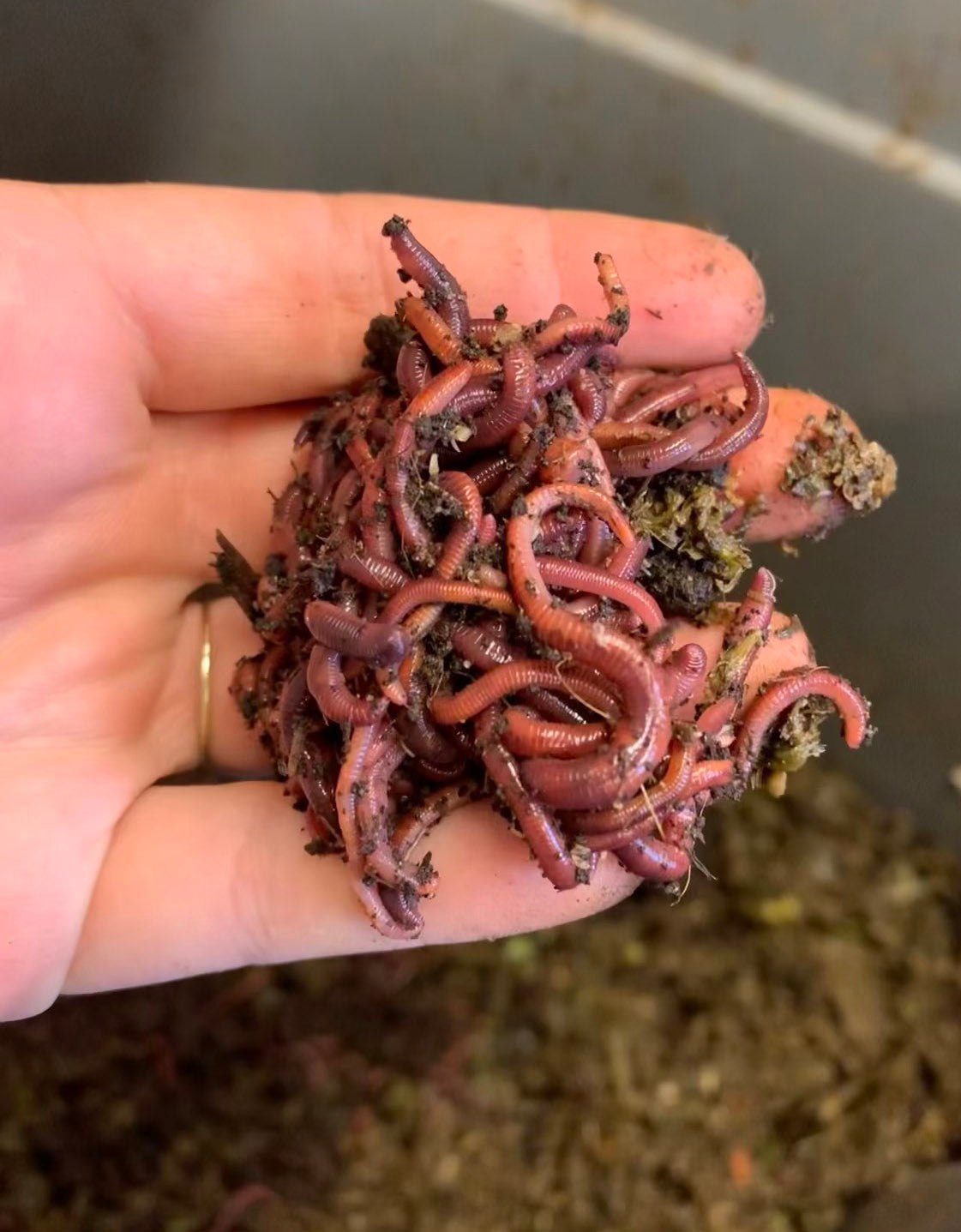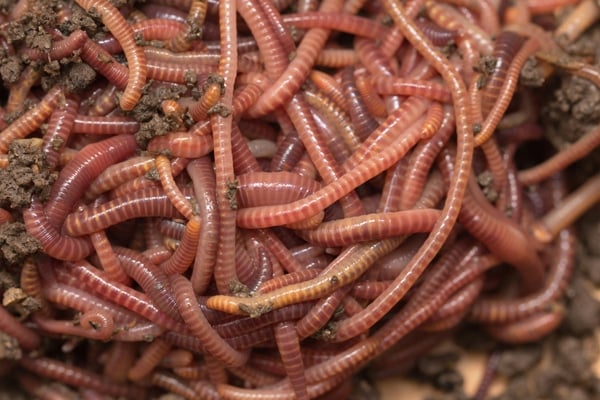Red Wigglers: The Unsung Heroes of Organic Waste Recycling
Red wigglers, or Eisenia fetida, offer as essential representatives in the natural waste reusing process, changing discarded products right into beneficial vermicompost. Their efficient failure of organic matter not just enhances soil quality however likewise adds to sustainable waste monitoring techniques. As the world increasingly seeks options to deal with waste accumulation and enhance farming performance, comprehending the function of these worms comes to be essential. What systems permit them to thrive in compost environments, and just how can they be effectively utilized in both property and industrial setups? Exploring these questions reveals the wider implications of vermicomposting in our environmental landscape.
What Are Red Wigglers?
The impressive durability of red wigglers, scientifically referred to as Eisenia fetida, emphasizes their crucial role in natural waste recycling. These little, reddish-brown earthworms are typically located in decaying raw material, such as garden compost piles and manure heaps. Lake Hickory Bait. Unlike various other earthworm varieties, red wigglers thrive in nutrient-rich settings and are extremely efficient at damaging down natural materials, making them essential for vermicomposting

(Lake Hickory Bait)Along with their function in waste decrease, red wigglers add to dirt health and wellness by boosting soil framework and aeration via their delving activities (Lake Hickory Bait). Their visibility in composting systems not just improves decomposition rates but additionally advertises a lasting approach to squander administration, illustrating their relevance in ecological conservation initiatives
Benefits of Composting With Worms
Composting with worms, particularly red wigglers, provides numerous advantages that improve both waste administration and dirt health. First, these worms successfully damage down organic waste, converting it right into nutrient-rich vermicompost that improves soil. This process increases decomposition, enabling a faster recycling of kitchen scraps and various other natural materials compared to traditional composting techniques.
In addition, the vermicompost produced by red wigglers is including advantageous microbes, which aid boost dirt framework, oygenation, and dampness retention. This boosts the general wellness of plants, advertising energetic growth and boosted yields in yards and agricultural setups. Additionally, the usage of worms in composting lessens the manufacturing of greenhouse gases, such as methane, adding to an extra sustainable waste monitoring system.

How to Begin Vermicomposting
Developing a vermicomposting system is a straightforward procedure that can generate substantial advantages for both waste administration and dirt enrichment. To start, pick a suitable container, such as a plastic bin or wood box, with adequate ventilation holes to ensure appropriate air flow. The measurements should preferably be about 2 feet by 3 feet, permitting ample area for the worms to flourish.
Following, prepare bed linens product, which can contain shredded paper, cardboard, or coconut coir. This bed linens needs to be moistened to create an appropriate habitat for the worms. Once the bed linens remains in area, present red wigglers (Eisenia fetida) right into the container, generally around one extra pound of worms for each square foot of surface area.
Adhering to the placement of worms, include organic waste, such as fruit and vegetable scraps, coffee premises, and crushed eggshells. With these steps, you will properly launch a vermicomposting system that adds to sustainable waste administration and enriches your soil.
Maintaining a Healthy Worm Bin
(Red Wiggler Express)Keeping a worm container thriving requires routine interest and care to make sure the wellness of the red wigglers and the effectiveness of the composting process. Correct upkeep starts with keeping an eye on the wetness degrees; the bin ought to perspire however not soaked. A great guideline is to keep a consistency similar to a wrung-out sponge.
Carefully mixing the bedding and food scraps every few weeks protects against compaction and makes sure that all worms have accessibility to oxygen. In addition, it is essential to feed the worms appropriately.
If the bin becomes as well hot or cool, the worms may end up being stressed. By diligently handling these aspects, one can maintain a durable and productive worm container.
Influence On Sustainable Living
The successful upkeep of a worm bin not only benefits the health of red wigglers but also contributes dramatically to lasting living practices. By reusing natural waste, such as cooking area scraps and yard debris, red wigglers assist draw away considerable quantities of material from land fills. This decrease in waste not just reduces greenhouse gas discharges yet likewise decreases the environmental concern related to waste monitoring.
In addition, the spreadings produced by red wigglers function as a nutrient-rich organic fertilizer, boosting soil health and wellness and advertising plant development. This all-natural option to chemical plant foods supports lasting farming and gardening methods, reducing reliance on synthetic inputs that can damage ecological communities. In addition, worm composting cultivates understanding of waste management, motivating people and neighborhoods to take on more lasting habits.

Final Thought
In recap, red wigglers offer as important factors to organic waste recycling through their reliable disintegration of natural materials. By integrating vermicomposting into waste monitoring approaches, individuals and communities can considerably minimize waste while promoting environmental sustainability.